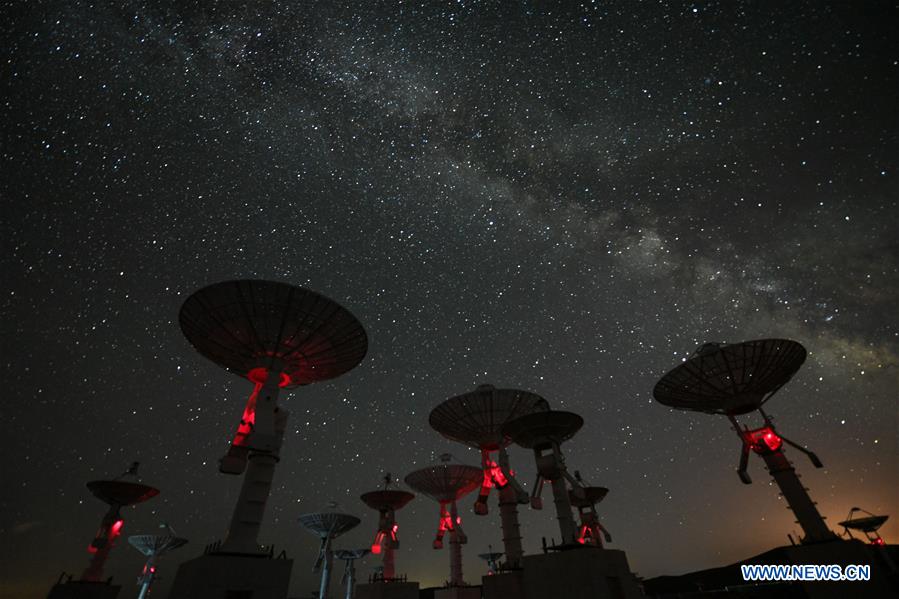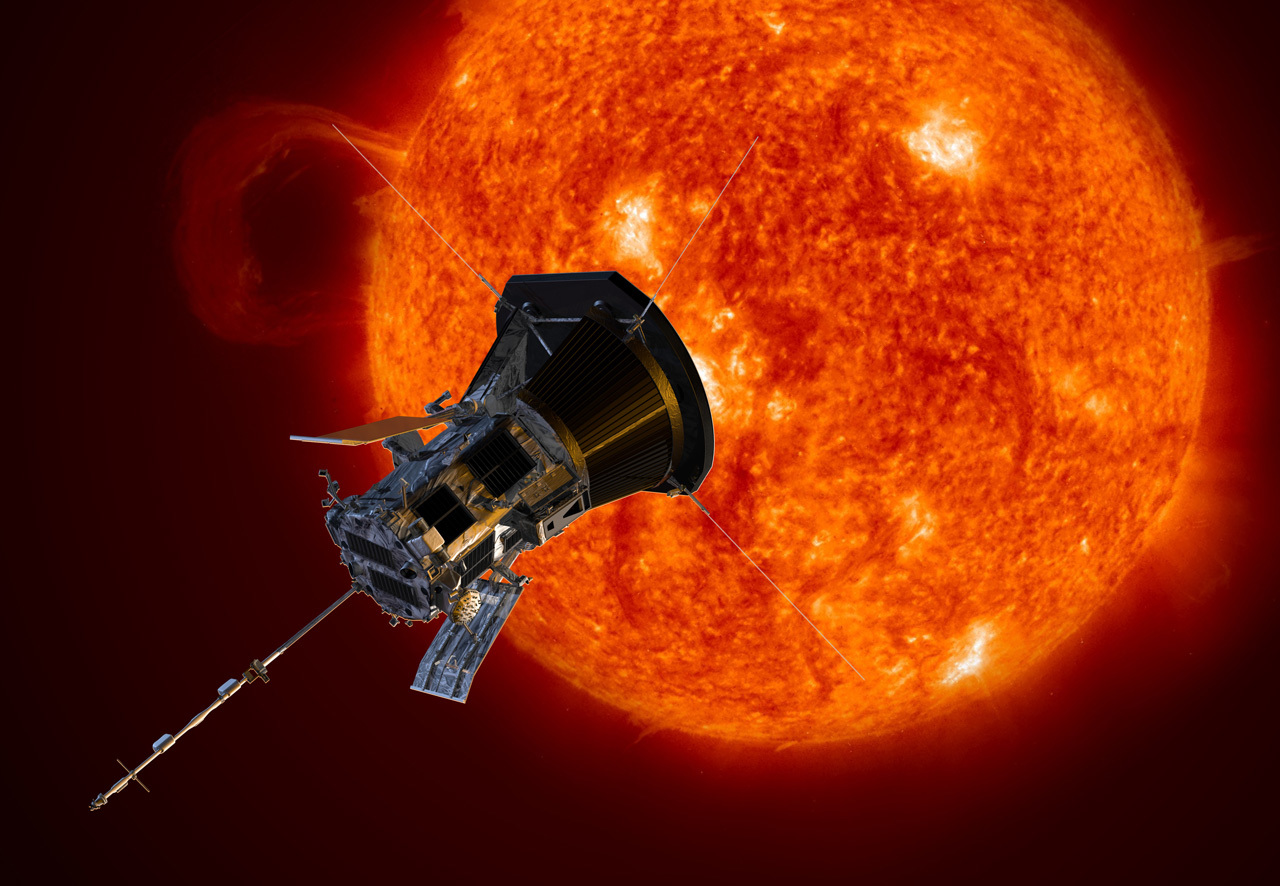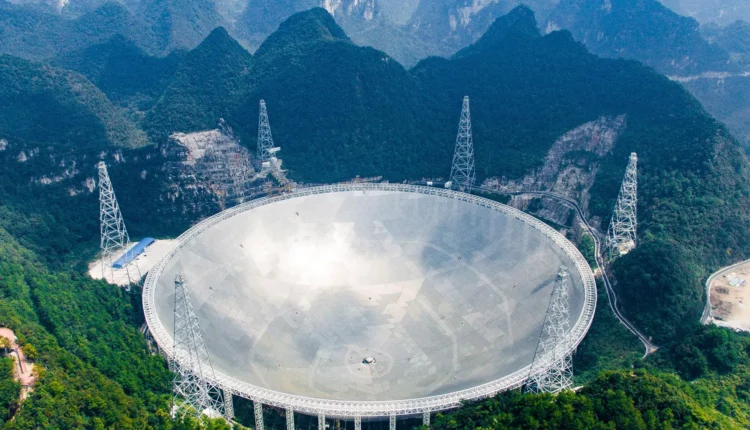©2021 Reporters Post24. All Rights Reserved.
China recently revealed plans to build the first phase of an ambitious space-based solar power station in 2028, two years ahead of schedule to take on its rival NASA. Now, in a separate endeavor, it is working on a telescope set up on the ground to monitor and study solar waves interacting with the Earth.
The researchers working on the ‘Mingantu interplanetary scintillation (IPS) telescope’ have announced that the work on the assembly of a massive new telescope will soon begin in the grasslands of northern China, Hong Kong-based South China Morning Post reported.
When finished, Inner Mongolia’s Mingantu telescope will be the world’s most sensitive of its kind. It will play a critical role in monitoring solar winds to assist in safeguarding people and spacecraft in orbit as well as electrical networks on Earth.

Solar winds are a continual stream of charged particles ejected from the sun. They interact with the Earth’s magnetic field as they race hundreds of kilometers per second across the solar system.
Pioneer astrophysicist Eugene Parker, whose name is featured on NASA’s Parker Solar Probe Mission, was the first to postulate the existence of the solar wind.
When the solar wind reaches Earth, it unleashes a storm of charged particles that travel along the lines of the planet’s magnetic field and toward the poles. When interacting with Earth’s atmosphere, these particles can cause magnificent aurora displays to appear over polar regions.
However, the sun also occasionally releases enormous amounts of those charged particles simultaneously in addition to the continuous solar wind streams. The phenomena, known as coronal mass ejections (CMEs), can create geomagnetic storms that can cause havoc with power grids, telecommunication networks, and satellites orbiting the Earth.
A few days after their launch, 40 communications satellites of SpaceX as part of the company’s Starlink project were destroyed in February by a solar wind storm. The SpaceX Starlink project is a constellation of satellites that provides internet to about three dozen countries.
Intense solar wind can reduce satellite orbits by up to 30 kilometers because the atmosphere heats up more and expands, increasing the possibility that satellites will crash with the atmosphere and lose energy. It is where the Chinese telescope comes into the picture.
Chinese Mingantu Telescope
Radio astronomer Chen Linjie, a member of the Mingantu IPS telescope team from the National Astronomical Observatories in Beijing, explained various approaches to studying solar wind physics.
For instance, probes can be dispatched to study the sun up close. One such probe is NASA’s US$1.5 billion Parker Solar Probe, which is now observing the sun’s upper atmosphere after making the closest visit ever. Meanwhile, In October 2021, China launched a satellite for solar observation called Xihe.

However, ground-based telescopes can also be used and are a more affordable method of studying the sun. Interplanetary scintillation, which describes the erratic oscillations of radio signals from deep space as they move through the solar wind towards Earth, is the phenomenon that the telescope is expected to keep an eye on.
“It’s similar to when you see twinkling stars in the night sky,” Chen said. “Your eyes receive optical waves scattered by the Earth’s atmosphere. Our telescope receives radio waves that get scattered by the solar wind.”
Scientists can also reconstruct the 3D structure of the solar wind, including its velocity, density, and other essential properties, by detecting the radio waves.
When it begins operation next year, the new Mingantu telescope, according to Chen, will feature three rotating cylindrical antennas that are each 140 meters (460 feet) long and 40 meters broad. It will be able to observe thousands of radio sources.
The 60 million yuan ($9 million) telescope will also collaborate with two smaller telescopes nearby to create a triangular network, which will help to improve observation accuracy further. The plan is to finish assembly by August and start aligning in September.
“We have never built a cylindrical antenna this large before, so it’ll be a challenge,” he said.
The telescope is being constructed in a remote area of the vast northern territory on the edge of the Gobi. Astronomers selected the location about 15 years ago due to its limited population and mountainous surroundings, which aid in reducing radio interference.
“Radio noises have worsened a little since then, but it probably won’t affect our work since we observe at specific wavelengths,” he said.
The Meridian Space Weather Monitoring Project, backed by the Chinese government, aims to establish a network of numerous monitoring sites across the nation to improve space weather forecasting. The Mingantu IPS telescope project is a component of the Meridian Space Weather Monitoring Project’s second phase.
According to its website, “The Meridian Space Weather Monitoring Project (or Chinese Meridian Project) is a ground-based program to monitor China’s geospace environment to acknowledge the needs of basic science and proper space weather operations.
Space weather can endanger the planet’s navigation and communication systems. One such storm, the Carrington Event in 1859, zapped telegraph cables and set the world on fire. To predict such occurrences and create technology better suited to survive them, NASA and other international organizations keep an eye on the space weather.
IPS telescopes have been built worldwide since the 1970s, including in India, Japan, and Mexico. When China is assuming the role of global power and trying to ace the space race, a telescope to monitor solar winds becomes indispensable.


